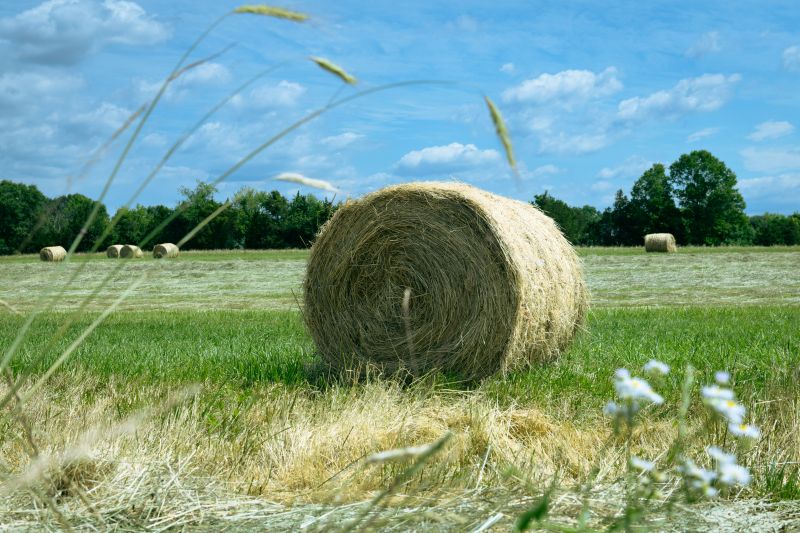
By Megan Dunn, soils and natural resources assistant at Innovation for Agriculture
The natural cycles and processes that form the foundation of agricultural production provide endless opportunities for circular design to be incorporated into practice. Circular economies aim to create self-supporting systems of production, rather than continue with the linear model of extraction and consumption which became the norm in the 20th Century. Processes such as composting, anaerobic digestion and recycling showcase the opportunities in agriculture to close the loop, and use ‘waste’ to prevent the need to extract as many raw materials.
What is meant by a circular economy?
The term ‘circular economy’ began to emerge in the 1990’s across a range of industries. It challenged the conventional approach of production, manufacturing and consumption by encouraging the creation of systems that can cycle waste and outputs back into the supply of materials and energy. This prevents a buildup of waste and an overdependence on depleting and finite natural resources.
In 1965, Kenneth Boulding referred to the global market as a ‘cowboy economy’. This referenced a model of growth reliant upon continuously expanding onto new land, or into additional mineral reserves, undisturbed habitat or fossil fuel deposits to grow. Whilst many aspects of Boulding’s work have become outdated, this theme remains. The Achillies heel of this, of course, is that this plan for continued growth relies upon the indefinite extraction of limited materials, and creates an additional problem – waste. Even the most efficient of these systems in our global economy tend to function under this pattern, and so circular economies challenges the notion of growth from extraction, and without removing opportunity for growth, it can offer a more resilient system where resource extraction and waste are tackled simultaneously.
Turning waste into an opportunity
Much of the waste in agriculture is readily available to be processed into a product that can be used again on farm. Practices like this are already widely implemented, such as spreading livestock manure or incorporating crop residues into the soil. There are a range of low and high tech solutions that can be implemented to increase the useability of ‘waste’, such as composting manure to increase its bioavailability, or using anaerobic digestion (AD) to create biogas, but the ethos is very similar.
‘Field to Fork’ is often discussed when looking at sustainable food systems, however we can extend this to ‘Field to Field’, so that creating a nutritious product is no longer viewed as an end in itself.
Throughout the food supply chain there is continuous waste, with many estimates suggesting one third of food is wasted globally. Food wasted in homes, on farms and during processing has the potential to be made into compost or an alternative fertiliser, which could add nutrients and organic matter to the soil. The same applies to crop residues and waste from livestock systems where it isn’t already left in or directly applied to the field. A field to field narrative would support circular design, emphasising that any part of a crop, and where possible an animal, that isn’t directly used to create food, materials or energy should be used to support the growth of the following crop in the field.
Circular economies on farm
On a day to day basis, circular design can benefit farm systems by creating more resilient supply chains; saving input costs and promoting more environmentally friendly farming practices. For example, an AD system can provide a solution to slurry storage, whilst producing fuel and fertiliser for the farm. These products, as has been shown clearly over the last few years, are very vulnerable to volatile market prices, and are reliant on finite fossil fuels. AD allows both fuel and fertiliser to be produced on farm, meaning that that cost and supply is consistent and controllable.
An aim of circular economies is to create self-reinforcing systems, which reduce the labour, time, energy and input need of an enterprise in the long term. This shares similarities with permaculture design, taking inspiration from nature to establish efficient and resourceful systems. When we look at a forest, for example, most processes operate as part of regenerative cycles, creating a resilient, low maintenance system with no external inputs or waste. We can take inspiration from this to mimic soil building, continuous ground cover, nutrient cycling of old plant matter and the co-existence of plant and animal species for certain functions to improve the self-sufficiency and resilience of our agricultural systems.
Creating circular food systems
Circular economies encourages us to think of a more holistic way of operating, where we do not rely on the repeated extraction of resources to grow. Instead, it explores how we can create systems that support themselves without producing the volume of negative externalities that we see today.
Circular economic design sits in a middle ground, not advocating for exponential growth, but also not restricting growth or challenging the status quo as much as some argue is needed for a truly sustainable future. It is therefore often a practical method of thinking that can be implemented in agriculture on any scale from a few small self-supporting cycles on one farm, to a cyclical global food system.
As with all theories, it is not the one silver bullet to transforming production and consumption, however integrating circular design is definitely one useful method for transitioning towards more sustainable food production and supply chains.




